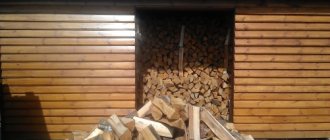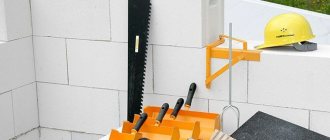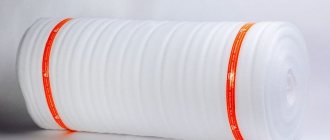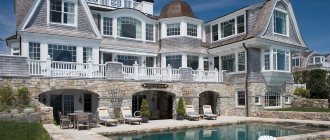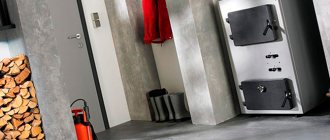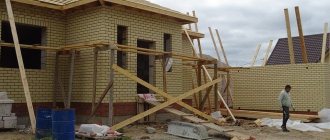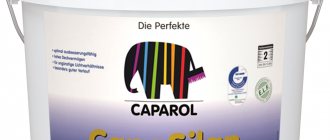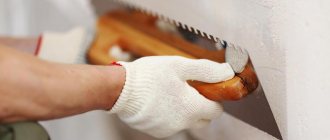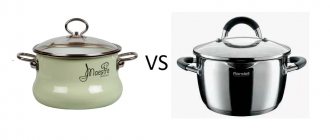Everyone knows that due to its unique characteristics, wood has been and remains the traditional and most sought-after building material throughout human history. It has not lost any of its primary importance in our time - modern construction can never do without natural wood, despite the emergence of new materials and technologies.
How to choose wood for building a house
Many owners of suburban development sites do not want to consider any other construction options other than a house made of natural wood. But in order for a wooden house to be reliable, warm and durable, when choosing a material for its construction, it is necessary to take into account some important factors that directly affect the quality of the future building.
So, let's look at the question - how to choose wood for building a house, so as not to lament the unfulfilled hopes later.
Types of wood for building a house
Wood is one of the best materials for building a private house, as it has unique natural qualities. Each of its breeds has individual characteristics. Having understood them, it will be easier to decide which wood is best suited for a particular case.
For private construction, both coniferous and deciduous wood are used. The most popular and affordable conifers are pine and spruce, the more expensive are fir, larch and cedar. Hardwood timber used for building houses is aspen, birch, poplar, oak, alder, linden and maple.
Let's take a closer look at the main characteristics of the most popular breeds.
Softwood
Pine
If we consider all types of wood in general, then, perhaps, pine will be the most used material for building houses. Everything is explained by the prevalence of this wood and its affordability.
Although pine is not without quite significant drawbacks, it remains in the leading positions of popularity among all types of wood used in construction
At the same time, pine lumber that has been properly dried has quite decent performance characteristics. The advantages include the following:
- low shrinkage - this means that a house made of this wood will not shrink much;
- softness - this quality greatly simplifies wood processing;
— moderate density contributes to low thermal conductivity;
— quite good resistance to putrefactive processes;
— evenness of the trunk and a small number of large knots;
— wear resistance;
- low tendency to develop large cracks.
The disadvantages of pine include the following factors:
- the appearance of blue staining, which can lead to destruction of the structure of the material, so it must be combated by treating the wood with special compounds;
— if we compare pine with other types of wood, we can note its lower resistance to rotting and cracking, as well as lower strength characteristics than, say, larch, cedar and oak.
When choosing pine for building a house, it is important to obtain reliable information about the conditions and location of its growth. The best quality is the material obtained from trees grown in the northern regions.
Spruce
Spruce, like pine, is a popular wood for private construction. And this is due to its characteristic positive features:
- low thermal conductivity, achieved due to the friability of wood;
- positive effect on human health, especially on the cardiovascular system;
Spruce wood can maintain a healthy indoor microclimate
- durability of lumber made from this type of wood;
— the presence of natural antibacterial substances in the wood, thanks to which the spruce is not susceptible to blue stain damage;
- spruce wood, like pine, is a low-drying, soft species.
The disadvantages of spruce lumber include the following characteristics:
- low moisture resistance;
- far from the best indicator of strength and wear resistance;
- tendency to the appearance of putrefactive processes;
— a large number of small and large knots, which makes cleaning and aligning the trunk difficult.
If you decide to build a house from spruce lumber, then you need to know that this wood requires initial, and then, during operation, quite frequent periodic treatment with special paints, varnishes and impregnations.
Larch
Larch is excellent for building a house, as it has almost impeccable natural qualities:
Larch is absolutely not afraid of exposure to moisture, does not rot and is characterized by excellent strength.
— high density and strength of wood;
- not susceptible to rotting, blue staining and the negative effects of various microorganisms and insects;
— high fire resistance;
- durability - houses made of larch can last for several centuries;
- moisture resistance and resistance to various atmospheric phenomena - precipitation, temperature changes, infrared exposure;
- beneficial effects on human health - increasing immunity, slowing down the aging of the body.
The disadvantages of larch include the following:
- hardness of the structure, which complicates its processing, but thanks to this characteristic, the wood has pronounced strength;
— strong drying of wood;
- high cost of building materials, exceeding the price of spruce and pine by two and sometimes more times.
Cedar
Cedar is not very often used to build houses, as it has a very high cost. However, its considerable price is due to its clearly high performance characteristics, which make the structure reliable and durable:
A house made of cedar is a very expensive pleasure, but it is a guarantee of quality and durability.
The obvious advantages of cedar wood include the following:
— wood is a low-drying material;
— complete resistance to putrefactive processes, to damage by insects and various microorganisms;
— high strength;
— moisture resistance;
— resistance to temperature changes, atmospheric and chemical influences;
— almost complete absence of risk of cracks;
— resistance to deformation;
— accessibility for processing;
— the presence of essential oils in wood, which helps create a healthy microclimate in the house, as they are a natural antiseptic and air flavoring agent.
Apart from the already mentioned high price, you probably can’t remember any other disadvantages.
Hardwood
Aspen
Aspen is rarely used for building houses. This is due to the fact that the material does not have the necessary qualities for building housing. Most often, aspen is used in the construction of baths or for finishing premises.
Aspen is good for a bathhouse or for decoration, but building a residential building from it is far from the best option
The advantages include :
- average wood drying ability;
— resistance to deformation, abrasion and moisture;
- ease of processing.
However, this breed also has its significant disadvantages :
— aspen is susceptible to natural diseases, so only trees of a certain age are used for construction;
— the service life of aspen lumber is significantly less than that of other types of wood;
— there are certain requirements for the harvesting and processing of wood that guarantee the preservation of its positive characteristics, but compliance with which is difficult to verify when purchasing.
Birch
Birch, like aspen, is not very suitable for building a house, as it is not durable. In addition, there are other pronounced disadvantages :
- wood is a highly drying, hard species - this quality makes its processing quite difficult;
— birch absorbs moisture well, which is why it is susceptible to very rapid biological decomposition if a set of protective measures is not taken.
Birch is also difficult to classify as the optimal material for building a house.
However, this wood also has its own advantages - it is strength and resistance to impact loads, a beautiful textured pattern and a delicate light color.
If, for some reason, it was nevertheless decided to build a house from birch logs, then experts advise laying out the first two lower rows of walls from a material more resistant to moisture, for example, oak or larch.
Alder
Alder is quite actively used for the construction of house walls, since, unlike some types of wood, it has the following positive characteristics :
— the low density of the structure significantly reduces its thermal conductivity;
— low weight allows you to equip any foundation for walls;
— high moisture resistance, commensurate with this parameter of oak and larch;
— homogeneity of the structural structure;
— alder does not warp or crack;
— wood has a large number of pleasant color shades.
Alder gives off a characteristic shade when cut. And the material itself for building a house is very good
The disadvantages of this material include the following:
- fragility of wood - so, when hammering nails into it, it can split;
— with constant contact with the ground, alder can be affected by putrefactive processes, although, when making water containers from it, it can be used without problems for a very long time;
- fragility and insufficient elasticity of wood;
— material intended for building a house requires special protective antiseptic treatment.
Oak
Oak has unique qualities, so it can be used for the construction of any enclosing and load-bearing structures.
Oak is suitable for any construction and finishing work. The only question is the profitability of this approach, since the cost of such wood is very high.
The advantages of oak wood include:
- average drying ability, due to which the lumber dries evenly;
— high moisture resistance;
— elasticity of fibers;
— resistance to damage by insects and microorganisms;
— structure hardness;
— high strength and reliability;
- very beautiful textured pattern and noble shades of wood.
We can only note that oak wood is practically free of disadvantages, with the exception of its very high cost. But it is precisely this very “minus” that in most cases makes the use of this material for building a house unprofitable.
Main performance characteristics of wood used in construction:
| Wood type | Pine | Spruce | Larch | Birch | Aspen | Oak | Alder | Cedar |
| Density, kg/m³ | 500 | 450 | 660 | 630 | 480 | 700 | 510÷550 | 400÷550 |
| Thermal conductivity, W/m×K | 0.14 | 0.11 | 0.12 | 0.15 | 0,17÷0,19 | 0.2 | 0,15÷0,17 | 0.095 |
| Tensile strength of wood along the grain, MPa: | ||||||||
| - stretching | 110 | 120 | 125 | 125 | 120 | 130 | 98 | 85÷90 |
| - compression | 48 | 44 | 62 | 55 | 42 | 58 | 47÷55 | 30÷40 |
| - bend | 85 | 80 | 105 | 110 | 78 | 106 | 85÷97 | 54÷72 |
| - chipping | 7.5 | 6.8 | 11 | 9.2 | 6.2 | 10 | 6.8 | 9.8 |
Wood species such as poplar, linden and maple should not be considered as materials for building a house, as they are short-lived and unstable to moisture and other negative external influences. Although there are offers on the market of ready-made log houses made from wood of these very species.
Find out which is better to build a house for permanent residence, and also read the review of popular materials in a special article on our portal.
Life time
According to Dmitry Avdeev, the service life of a stone and wooden house is approximately the same with proper care and proper operation. “A wooden house will not rot if you periodically repaint the facade. Of course, if you paint a house and then don’t do it for 30 years, the sun will burn through the wood, and it will be difficult to restore it, says the specialist. - If a house is being built for 60-70 years, it is better to choose stone; wooden buildings deteriorate by this time. architect Le Corbusier once said .”
What are the disadvantages of building a house from foam blocks? More details
Application areas of different types of wood
According to their purpose, all wooden building materials are divided into finishing and general construction. The latter are intended for the construction of enclosing and overlapping structures, as well as for other loaded elements of the building. Finishing materials are used for decorative design of surfaces.
From the information presented above about wood species, it is clearly seen that they differ in their technical and operational characteristics. Therefore, when building a house, several wood species are almost always used, each of which is best suited for a specific area of construction.
- Pine is excellent for the construction of enclosing structures.
- Spruce lumber is often used to make floor beams, rafter system elements, flooring, and ceiling cladding.
The unique properties of larch even make it possible to strengthen the banks of reservoirs and install walkways and piers
- Larch is used for laying the lower crowns of the house, as it has high moisture resistance. In addition, larch trunks are used for pile foundations, even for structures built on water, for example, walkways or piers, as well as for strengthening the banks of reservoirs.
- Oak is most often used for making windows, doors and finishing openings. In addition, oak can be used for interior wall decoration, as well as for flooring.
- Maple, linden and alder are used for carpentry and carvings, as they have a soft structure. For example, this wood is used to make platbands or carved cornice trim.
- Birch or alder is used for interior decoration. The textured pattern and color shades of alder wood allow it to be used to imitate more valuable types of wood.
Additional thermal insulation of buildings
Additionally, you can ensure maximum heat retention in the house by using external insulation by building a ventilated façade. The essence of this is to place profiles on the walls on which the finishing material will be fixed, depending on the tastes of the owner.
Various insulation is placed in the resulting space. Most often used:
- Styrofoam;
- Mineral wool;
- Expanded polystyrene;
- Ecowool, glass wool.
The list is not complete; the variety of products for insulating buildings on the market is very wide. First of all, they are subject to requirements for non-flammability, durability and environmental friendliness for residents.
When building such external insulated facades, you need to carefully consider the ventilation system. If this requirement is not met or not fulfilled fully enough, then fungus and mold may appear on the walls, which will ultimately lead to the process of rotting and loss of properties of any insulating material.
Wood materials used in building a house
When building houses, various wooden products are used for the construction of enclosing structures and their cladding - these can be solid logs or lumber made from them - boards, beams, slats, etc.
One of the options for cutting logs into construction lumber
To have an idea of what wooden materials are on the market and in what area of construction they are used, their main varieties will be discussed below:
Construction of a log house from hand-processed logs
- Mechanically or manually processed logs are a building material for the construction of enclosing load-bearing structures. Logs processed by these methods are more durable in structures unprotected from the facade than their rounded counterparts, since the natural protective layer located directly under the tree bark is not removed from them. But working with such logs is more difficult, since their “geometry” can “dance” somewhat in one direction or another.
Log house made of rounded logs
- The rounded log has an ideal geometry, which is achieved through special mechanical processing. During the rounding process, several top layers are removed from the product, which weakens the protective qualities of the building material. Therefore, such products require mandatory impregnation with antiseptic primer solutions. This material has a more aesthetic appearance and is more expensive than conventionally processed logs.
Calibrated log - the entire batch of material has exactly the same diameter.
- Calibrated logs, unlike the products described above, are given absolutely the same diameter. To build a wooden log house for permanent residence, the calibrated log must have a diameter of at least 250 mm, otherwise the structure will have to be additionally insulated. Very often, after rounding such logs in the factory, a longitudinal inter-crown groove is immediately selected (as shown in the illustration above).
- Solid lumber - These lumbers, usually made from the core of a log, can be rectangular or square in a variety of sizes. Massive timber can be divided into three subtypes - these are products of natural moisture with a regular and profiled section, as well as profiled ones that have been dried in special chambers.
The illustration shows three types of solid timber - non-profiled and profiled with natural moisture, and a profiled version that has undergone special drying.
Untreated timber with natural humidity has smooth surfaces, and profiled products have longitudinal grooves for easy joining when building walls. It is impossible to immediately build a house from this material, since it takes time to dry it out, during which the wood can crack and deform.
Non-profiled timber can be used to build the walls of a cobblestone structure or for the frame of a frame house. It is also used in the design of the rafter system, as a mauerlat, beds, racks, etc.
Profiled dried timber is the best option for building walls, but has a higher cost.
The minimum cross-sectional size of timber intended for walls must be at least 150÷200 mm. Otherwise, additional thermal insulation will be required to ensure comfortable living in the house.
Glued laminated timber
- Glued laminated timber is a prefabricated structure consisting of 3÷5 boards glued together under pressure. The product is then processed and profiled.
These products do not deform or crack to their full depth, since before gluing them, the board is dried in a special chamber where the optimal moisture content of the wood is achieved.
In addition, laminated veneer lumber, unlike solid timber, can have a very large cross-sectional size, making it possible to build walls that do not require additional thermal insulation. But, it’s true, the cost of glued profiled timber may seem frighteningly high.
Making a log frame from a gun carriage
- A carriage is lumber, which is a cross between a beam and a log. It is made by cutting two sides from a massive log. Thus, the carriage can be called a log with two flat side surfaces.
The carriage can also be purchased undried or already fully prepared for construction. Naturally, material that has undergone special drying will cost much more.
The most popular material at all stages of construction is boards
- A board is lumber that can have a standard length commensurate with a log (usually 6 meters), a thickness of up to 100 mm, and a width that is two or more times greater than the thickness.
Boards are used in the construction of a house at all stages and in a wide variety of areas. This is a rafter system, floor beams, joists, cladding of frames, floors, ceilings, production of lining for decorative exterior and interior decoration. Boards are also widely used as auxiliary materials.
The board, just like logs and beams, can be dried and processed or have natural moisture. Undried boards can only be used for preparatory work, for example, when arranging formwork for the foundation.
Birch - traditions should not be broken
Most people are inclined to believe that such firewood is the best fuel for starting a fire in a fireplace, stove or sauna. And all due to invaluable advantages:
- easy to light;
- burn for a long time;
- the flame turns out beautiful and even;
- no sparks;
- copious heat generation.
But the advantages don't end there. Since ancient times, the healing properties of birch have been known. The pleasant aroma has a beneficial effect on the human body, protecting it from colds and chronic diseases. In other words, birch firewood has a disinfecting effect, which causes approval among those who like to take a steam bath.
When burning, logs emit a small amount of carbon dioxide, and this is certainly a plus. But there is also a minus - a high concentration of tar. And this combustion product is no longer beneficial to health. In addition, soot and soot form on the walls of the stove and in the chimney. As a result, over time, not only is traction lost, but the risk of fire or carbon monoxide poisoning increases. Therefore, when choosing this firewood, it is also worth mastering the profession of a chimney sweep, as well as maintaining safety.
But, despite its shortcomings, birch is the most popular, cheapest and most practical fuel.
How to convert the volume of wood into piece quantities or vice versa?
And one more question that may seem important.
Most often, lumber at bases is assessed and sold in volumetric quantities (cubic meters). Therefore, for the convenience of the reader who is planning a purchase, below is a calculator that will help you quickly convert the piece quantity of the required material into a volumetric equivalent.
The calculator has the ability to calculate both for rectangular materials (board or timber) and for round materials (log).
Calculator for converting piece quantities of lumber to volumetric equivalent
Go to calculations
And the second calculator will help solve the inverse problem - it will recalculate how many piece lumber will be needed for a certain purchased volume:
Fruit trees for flavor
Of course, no one will specifically grow fruit trees for the sole purpose of using them for firewood. However, there is still an apple, pear, plum or cherry tree on the site. Over time, you can collect a lot of branches and twigs, which you can put into the firebox. Some people make fires right away, but it would be much more correct to carefully cut them and put them in a woodpile. They are ideal for lighting a sauna, since along with a good and even heat, the combustion of wood produces light steam accompanied by a pleasant, delicate aroma.
It costs nothing to saw and chop firewood; the apple tree is the leader in terms of heat release, and there is practically no smoke. But this choice is more of an aesthetic nature.
An alternative option instead of building a wooden or brick house
If you wish, you can combine wood and brick, building a combined house for yourself. The first floor is built from stone, and the second from logs or timber. This is an excellent alternative to a house made of one material.
This combined solution has many advantages, including:
- A solid first floor made of brick will not allow the second floor made of wood to rot. This significantly improves the performance characteristics of the house.
- In the case of a combined house, on the ground floor it is recommended to place rooms associated with the possibility of ignition: kitchen, sauna, fireplace room, heating rooms. This will provide additional fire safety.
- If we consider the cost of building a combined house, it is lower than that of a completely brick house. In addition, a house made of brick and wood is much more environmentally friendly. It is better to place a children's room and bedrooms on the second wooden floor.
Which shelter is warmer?
When choosing a building material, an important criterion is its heat conservation. The thermal conductivity coefficient of brick is four times higher than wood. Therefore, a structure made of logs quickly warms up, does not need cladding, and slowly releases heat.
At the same air temperature, it will be warmer in a log dwelling. A house made of brickwork will have to be constantly warmed up in rainy or cold weather. Otherwise, it will become damp, uncomfortable, and chilly inside. After cooling, it is difficult to heat the premises; you will have to spend a lot of money on heat resources.
The answer to the question which house is warmer: brick or wooden, is unequivocal - wooden is much warmer.
Exotic
As you know, there are quite a lot of tree species, and to list all their types, you could write a thick book, or even more than one.
Therefore, in addition to the varieties listed, it is worth touching on at least a few more:
- Elm. It produces a lot of smoke, is difficult to split and takes a long time to ignite.
- Poplar. Like firewood for a stove - nothing at all. They prick easily, just scatter sparks and burn quickly.
- Beech. It is also difficult to light and split, but can be used raw.
- Fir. Like poplar, it is easy to prick and ignite, but you cannot do without a lot of smoke and sparks.
- Sycamore. Wood is easy to kindle, but difficult to split.
Can they be used for heating in a stove? Everyone can find the answer to this question themselves. But, on the other hand, why not?!
Which home is better for living?
Wood is a living material with a number of advantages over brick. Nothing compares to a real wooden home. It is environmentally friendly, comfortable, cozy, has the ability to regulate humidity, and creates its own microclimate. It is cool in summer and warm in winter. Apartments made of wood have fresh, clean air, living there is good for your health.
But when deciding to build a wooden house, it is important to remember that you will have to take care of it often. Its appearance deteriorates and deformation occurs. It needs to be properly treated every few years. Brick does not require any maintenance.
Although if you use laminated veneer lumber, which is free from the disadvantages of wood, you can avoid many problems. This modern material is resistant to climatic and biological damage, fire, and has a low shrinkage percentage.
Structures made of timber are very popular in Canada, the USA, and Scandinavian countries. In the last few years, residents of Europe and the CIS countries began to often install them.
Combined buildings are also in demand. The bottom of such a dwelling is made of brick, and the top is made of wood. Its interior decoration involves placing highly flammable rooms on the ground floor: dining room, fireplace, kitchen, bathhouse. In the second, ecological one, bedrooms and children's bedrooms are usually set up.
Table: Comparison of various materials for wall construction
| Material | Advantages | Flaws | Cost of materials and work $/M 2 |
| Brick (thickness – 380 mm.) | Reliability; durability; environmental friendliness. | The need for insulation; labor intensity; heavy walls; you need a strong foundation. | 75 |
| Ceramic block (thickness – 380 mm.) | Reliability; durability; environmental friendliness; construction speed. | Fragility of the material; difficult to find a specialist. | 82 |
| Aerated concrete (thickness – 380 mm) | Speed of construction; durability; reliability; environmental friendliness; thermal insulation. | A solid foundation is needed; Low bending strength. | 60 |
| Rounded timber (diameter – 200 mm.) | Environmental friendliness; speed of construction. | Wall shrinkage; Great dependence on the quality of the material and specialists. combustion; rot. | 44 |
| Glued profiled timber (200/230 mm.) | Environmental friendliness; speed of construction; lightweight foundation. | Combustion; rot | 113 |
| Wooden frame + sandwich panels with insulation. | Speed of construction; lightweight foundation; good thermal insulation. | The durability of a house depends on the technology and quality of construction. | 44 |
Video: comparison of wall materials
In one old, old fairy tale, three little pigs enthusiastically argued about what was best to build a house from. A fairy tale is a fairy tale, but even now many developers often argue about the same issue. It is especially important what material the external walls will be made of. After all, they are the ones who are able to make the building durable, beautiful and long-lived.
Light willow logs
If you come across willow firewood in your field of vision, you shouldn’t refuse them. The heat from them is great, the flame is even, and in addition there is no soot. The only drawback is that they burn out too quickly. However, this can easily be compensated for if there are a sufficient number of willow trees in the area where you live. Many landscaping companies don't give them much time to develop. Old trunks are cut down, and branches are removed from still young trees. So you shouldn’t miss any opportunity to profit from such fuel for your home, bathhouse or fireplace.
Aspen – cleaning firewood
Aspen also takes a long time to light and burns out quickly. Therefore, you should not use such firewood to heat the stove, as they say, “from scratch.” At the same time, the flames are long and bright. There are also some other valuable properties. In addition to the fact that firewood itself does not form soot, it is able to remove carbon deposits formed from other logs. At the same time, when compared with birch firewood, aspen logs produce much less heat when burned.
But they can be used to “clean” the chimney. For this purpose, it is recommended to add several aspen firewood at the final stage of the firebox. And the chimney will be “cleaned”. Although they themselves do not produce heat, they are able to maintain heat for a long time.
This is important to know!
Regardless of the type of trees that will be used for firewood, you need to know about some features:
- Deadlines. Of course, those logs that have already served their “allotted” time will also burn (provided that they are dry and there is no mold on them). However, most trees retain their aroma only for two years. Alder and aspen are a pleasant exception in this regard - 3 years.
- Everything has its time. In winter, the humidity of trees is at a minimum level. In this regard, the preparation of firewood must be done during this period. Drying usually takes about 12 months. However, the timing depends on the type of forest, harvesting time, storage conditions and a number of other factors. In this case, the duration may increase significantly or, conversely, decrease.
- Dimensions. Which firewood is more profitable? Of course, those with optimal sizes. And these are 40-50 cm in length and 8-10 cm in thickness. This is how they are convenient to store and are suitable for any firebox.
- Rot. Under no circumstances should you use rotten firewood. Keeping logs on the ground for a long time results in the accumulation of toxic substances released during combustion, which is not beneficial to humans. For this reason, when cutting down branches, you should immediately take the correct measures to store them. When choosing raw materials for heating among dead wood, you should not take into account long-fallen branches.
- Storage issues. Logs should be laid with the bark facing up. This will protect the firewood from accidentally entering moisture, which evaporates faster from the surface of the bark. And if you show your imagination, you can build an original woodpile to the delight and surprise of your guests.
As can be seen from this material, it is not enough to know which firewood is best for the stove. It is equally important to ensure that they are stored correctly.
Regarding the arrangement of a woodpile, you can always come up with a lot of different ideas: from the most creative and crazy to the simplest to implement.
Traditional brick
A brick house can last 100 - 150 years. It will perfectly survive rains with hurricanes and hail, and severe frosts, and withering heat. Brick walls have been laid since ancient times, so the technology for their construction has been worked out to the smallest detail. Accordingly, it is easy to find a good master.
Ceramic or silicate
Ceramic brick is red in color. It is made of baked clay, so it is very durable and highly environmentally friendly. This material is not afraid of cold and does not allow water to pass through. It can be solid (no more than 13% voids) and hollow (up to 49% voids). The shape of the holes in the brick can be round, square, oval, horizontal or vertical. With an increase in their number, the thermal insulation properties improve.
Varieties of ceramic bricks.
Sand-lime brick is white. Its main components are lime, sand and a small amount of additives. This type of brick is also produced both solid and with cavities inside. The latter is lighter, and the walls made from it are much warmer (after all, air is an excellent heat insulator). But solid sand-lime brick can pamper the developer with a variety of colors. For the strength of a brick, it does not matter whether it is solid or has cavities inside.
Sand-lime brick.
Ordinary and facing bricks and their purpose
Both types of bricks have different purposes:
- Ordinary brick is also called construction brick - it is used for internal masonry of walls. For him, small cracks are not considered defective. It doesn’t matter if the corners or edges are slightly broken, there are notches in the corners.
- The facing (facing) brick must have an impeccable appearance and be free from nicks and flaws.
Some types of facing bricks.
About the strength of brick and resistance to frost
Strength determines the brand of brick. There is a special marking for this indicator: the letter M and a number next to it (from 75 to 300). This number is the load that a given brand can withstand per square centimeter. The higher this number, the heavier the brick. For the walls of a two-story or three-story house, brands M100 and M125 are suitable. The base or foundation is laid with M150 or M175 bricks.
When choosing which brick to build a house from, you should also take into account frost resistance (the ability to freeze and thaw without being damaged). To denote this indicator, the letter F was chosen, next to which there is a number from 15 to 100. It means the number of freezing and defrosting cycles without damaging the material. In warmer areas, grade F15 is sufficient for external walls; where it is colder, grade F25 is sufficient. The cladding is usually made with F50 brick.
Advantages and disadvantages of brick
| Advantages of brick + | Disadvantages of brick - |
| Attractive view. | Heavy weight. |
| Durability. | Difficult to install. |
| Ability to implement any complex project. | Large expenses for paying a good master. |
| Resistant to corrosion, mold and mildew. | Requirement of a solid foundation. |
| Non-flammability. | The need to use a heat insulator. |
| Noise protection. | |
| Good heat retention. |
